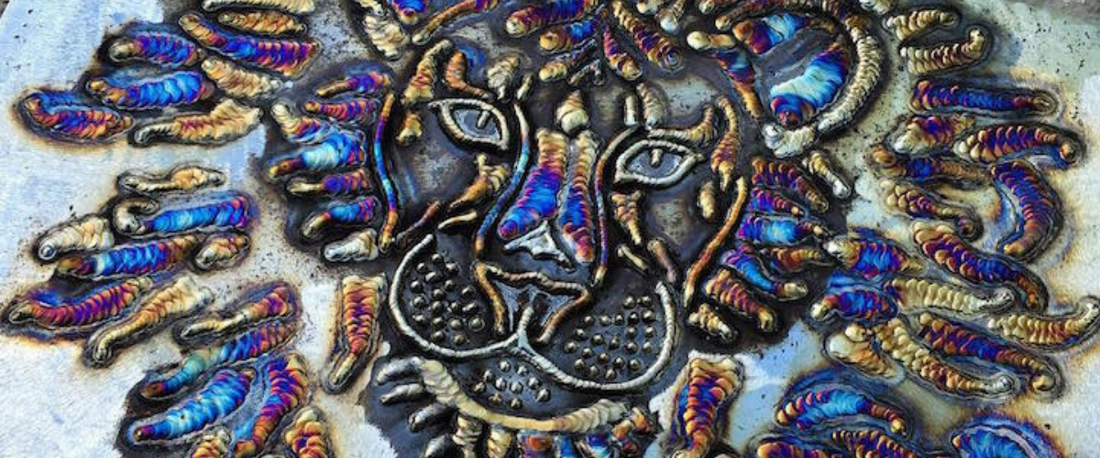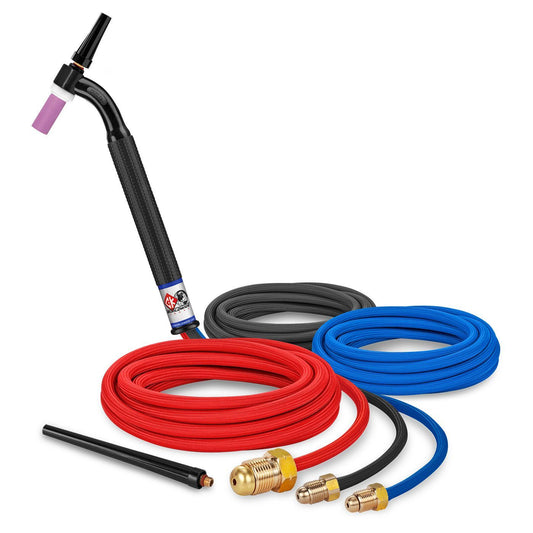TIG welding is the most popular form of welding in the field of metal art sculpture. The low heat of a TIG welder leaves a small weld seam and provides a very precise weld that is neat and clean with minimal distortion to the metal being joined together. However, TIG welding can take some time to learn, and therefore it’s important to gather some tips before getting started.

Sketch Your Work Piece First
Before laying your first tack welds, create a clear picture of what you’re creating. When a weld is in place, you obviously won’t want to move it! Even the most experienced welders begin with pencil and paper in order to better define their vision and to make sure every weld is right where it belongs.
Learn to Relax While Welding
It’s easy to tell someone creating a sculpture to relax, but there are simple practices that can help a sculptor remain at ease while welding. For starters, don’t hold your breath. One welder says that this is a very common habit among beginners, especially with the precise TIG welding process. Practice breathing normally while refining your TIG welding technique.
Another relaxation practice is to pay attention to your shoulders and hands as you grip the torch. Are your shoulders arched up and tight? Are your hands squeezing the TIG torch as if the wind could blow it out of your hands? Pay attention to your body and loosen up your grip and your posture so that your mind is free to focus on your work.
Clean Your Metal Properly
While everyone knows that cleaning the metal will lead to a stronger weld without any defects such as porosity, if you don’t clean it properly, you could end up with just as many problems. For example, alcohol will clean off the grease from steel, but it will not remove the oxides. For that, you’ll need to use an emery cloth. And even the cloth you use could end up leaving material on the metal that needs to be removed prior to welding.
Adjust Your Settings for TIG Welding
Some welders insist that the settings on a welder are more important than cleaning the metal, with some opting to not even bother with cleaning the metal first. Perhaps skipping the cleaning process goes a bit too far, but having the right amperage and heat control with a foot pedal is the key to making a weld on a sculpture.
This is something you can figure out through trial and error, though metals such as aluminum and steel will call for different settings. If you’re welding steel, then a difference of five amps can be enough to ruin a weld. Pulsing on a welder with DC capabilities is another great way to manage your heat input.
Use the Right Tungsten and Filler Metal Sizes
By using the correct sizes of filler metal and tungsten, you’ll ensure you have just enough heat and filler metal to complete your job without creating a sloppy weld by adding too much material or warping the metal with too much heat. These are basic practices that every TIG welder should keep in mind, but they’re especially important when creating art.
If you are looking into making some TIG art and need anything for it, check out Bakers Gas and see what we have to offer here.



